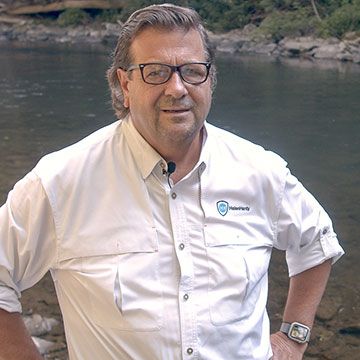
RECENT POSTS
UV Degradation of Oil Spill Control Materials Explained
When you work outdoors, you know that there aren’t many materials that can stand up to harsh elements like sun, wind, and rain. And when it comes to spill containment or cleanup in the outdoors, traditional spill control products are no different.
Ultraviolet (UV) resistance for sorbents is a topic that’s always on the minds of environmental professionals that operate in outdoor industries. If you work in any of these industries, you know what we’re talking about:
-
Utilities Transmission & Distribution
-
Transportation
-
Heavy Construction
-
Oil and Gas Exploration
- Environmental Engineering
People always ask us if our sorbents will turn to powder when exposed to UV sunlight.
They’ve watched their sorbent material waste away before their very eyes, time after time. But, sadly, few question it anymore. For the past 40 years, sorbents and spill control products have been made from the same old materials and perform the same old way. They certainly can’t stand up to wet conditions, much less the hot sun beating down on them. Environmental professionals know that ultraviolet degradation is a problem. What they don’t understand is why degradation happens and what solutions exist to avoid the constant waste.
To devise a solution, you first need to understand the problem. When you understand the potential UV degradation levels of different spill control materials—you can make better decisions about your specific needs. Eliminate the guesswork and choose the best material for your application.

So here’s the lowdown on polypropylene and UV radiation.
Plastic fibers are everywhere in today’s world. They’re in many of the products we use every day, from our sunglasses to our automobiles. But, no two plastics are the same. They all have different characteristics and uses. So, it’s important to consider the various plastics that exist.
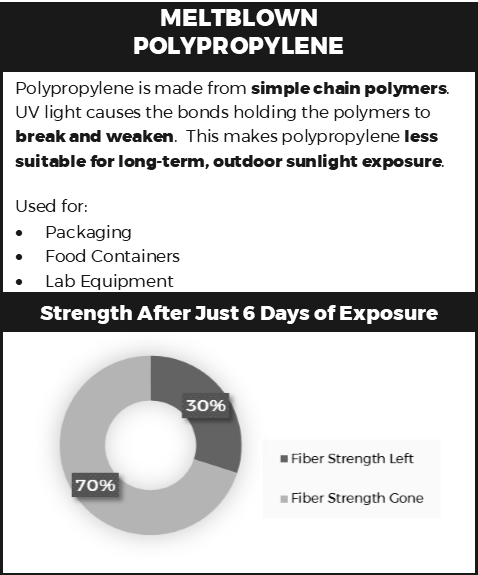
Polypropylene is one of the most abundant plastic fibers that exist. Spill control materials are traditionally made up of these plastics — and most commonly, polypropylene is a key component.
Polypropylene is often useful for high heat or chemical situations. At its most basic form, it’s a simple chain polymer. Due to its chemical structure, exposure to the sun’s UV radiation causes a photooxidative degradation (that’s when the bonds holding the polymers break down and weaken). Ultraviolet rays interact with the bonds and form free radicals and combine with oxygen and then discolor and crack. It deteriorates the mechanical properties of a material, essentially causing them to be useless. This polymer degradation changes the shape, color, and tensile strength of the material.
This breakdown makes polypropylene less suitable for long-term outdoor sunlight exposure. So it’s no wonder that you tend to see this type of plastic used for packaging, food containers, and lab equipment and not necessarily for the roof of your shed.

If you want to imagine UV degradation, think of your car. The paint on the outside has a protective polymer coating. However, over time and exposure to the sun, the bonds of that coating will break down, causing your paint to fade, become less glossy, and crack. That’s why we clean and wax our vehicles to extend our paint life.
Our solution and the science behind our UV-resistant spill control products.
When we researched how to create a spill control solution that worked, we knew we had to be innovative. So we searched for material components and bonds that were different, ones that could create a preprogrammed lifespan that was dependable.
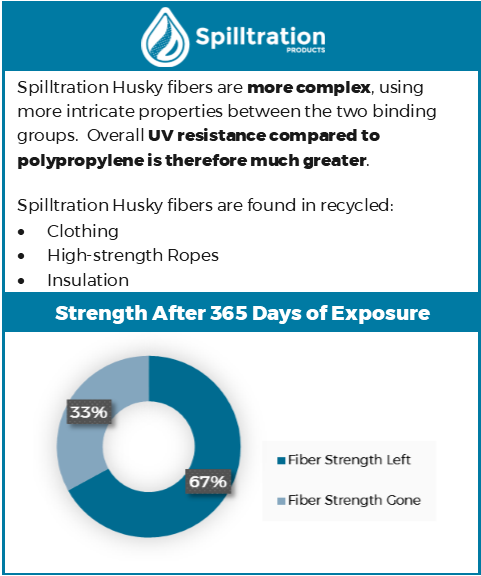
The twiddly bits that make up HalenHardy’s Spilltration® Husky fibers are more complex— utilizing ester properties between two binding groups. This configuration provides much greater UV resistance compared to the standard polypropylene.
Spilltration® Husky Products are great for containing oil and fuel spills and can be combined with other Spilltration® products for added sorbency of these hydrocarbon sources.
- Hydraulic fluid
- Transformer oil
- Cutting fluids
- Diesel fuel
- Gasoline
- Lubricants
- Transmission fluids
- Fuel overfill
- Outdoor machinery and heavy equipment
- Leaky valves and pipes
HalenHardy’s commitment to creating sustainable, environmentally friendly absorbents.
Our materials are environmentally friendly. We don’t want to crowd landfills with dirty and oily sorbents. So, our reusable Spilltration® Husky fibers come from 100% post-consumer waste. And, because they don’t break down in the sunlight, you won’t spend extra labor hours removing tiny white pieces of sorbent from your job site.
We also offer Polybacked Spilltration® Husky products, which have a four mil poly backing that prevents oil or fuel leaks from penetrating the bottom of the absorbent material. This impermeable backing makes Husky Polyback perfect for combating long-term oil-based leaks and spills, especially for remote work.
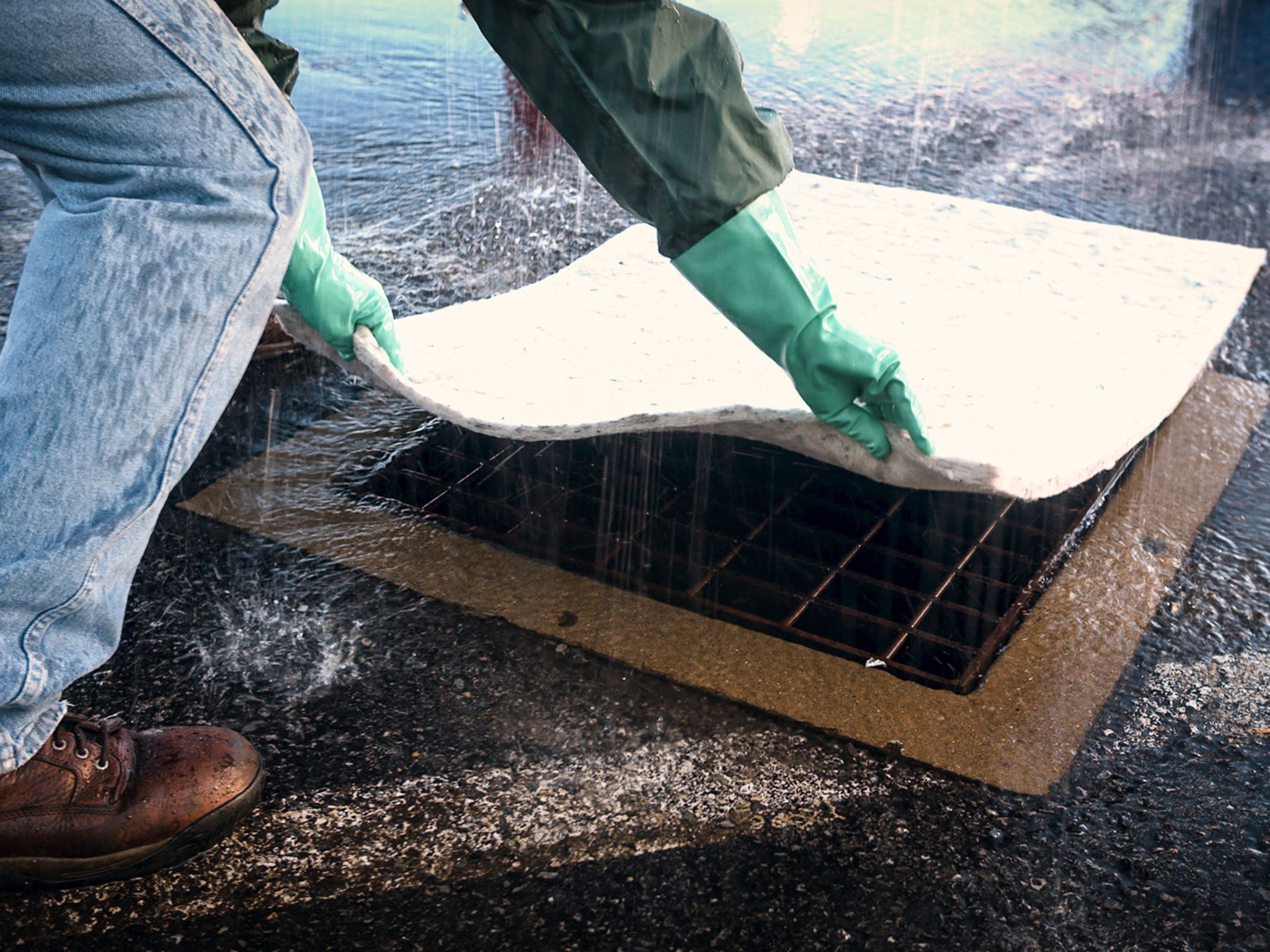
Spilltration® Husky Oil Filter Rug
Available in pro pack cases, smooshed pack cases and polybacked.
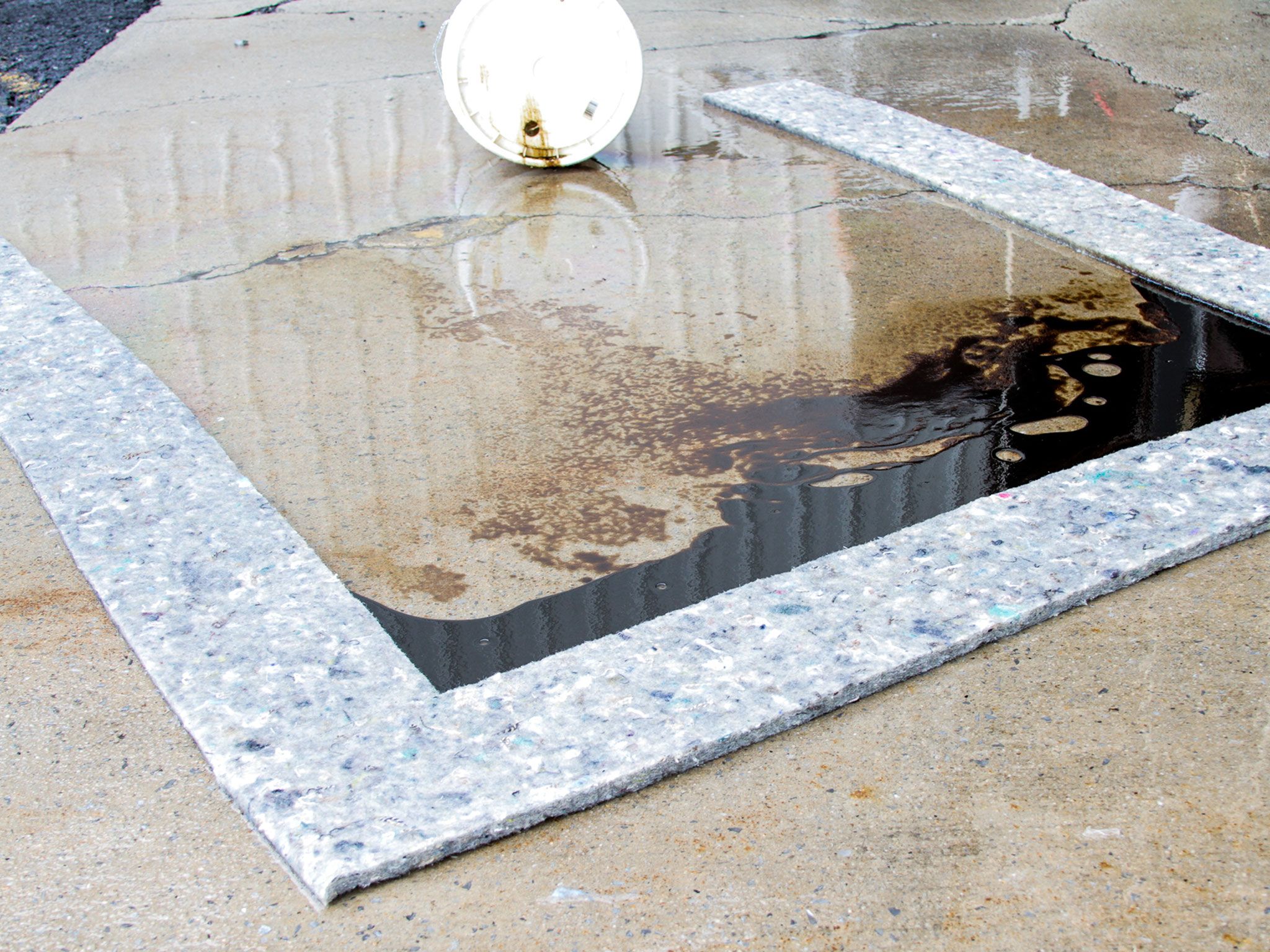
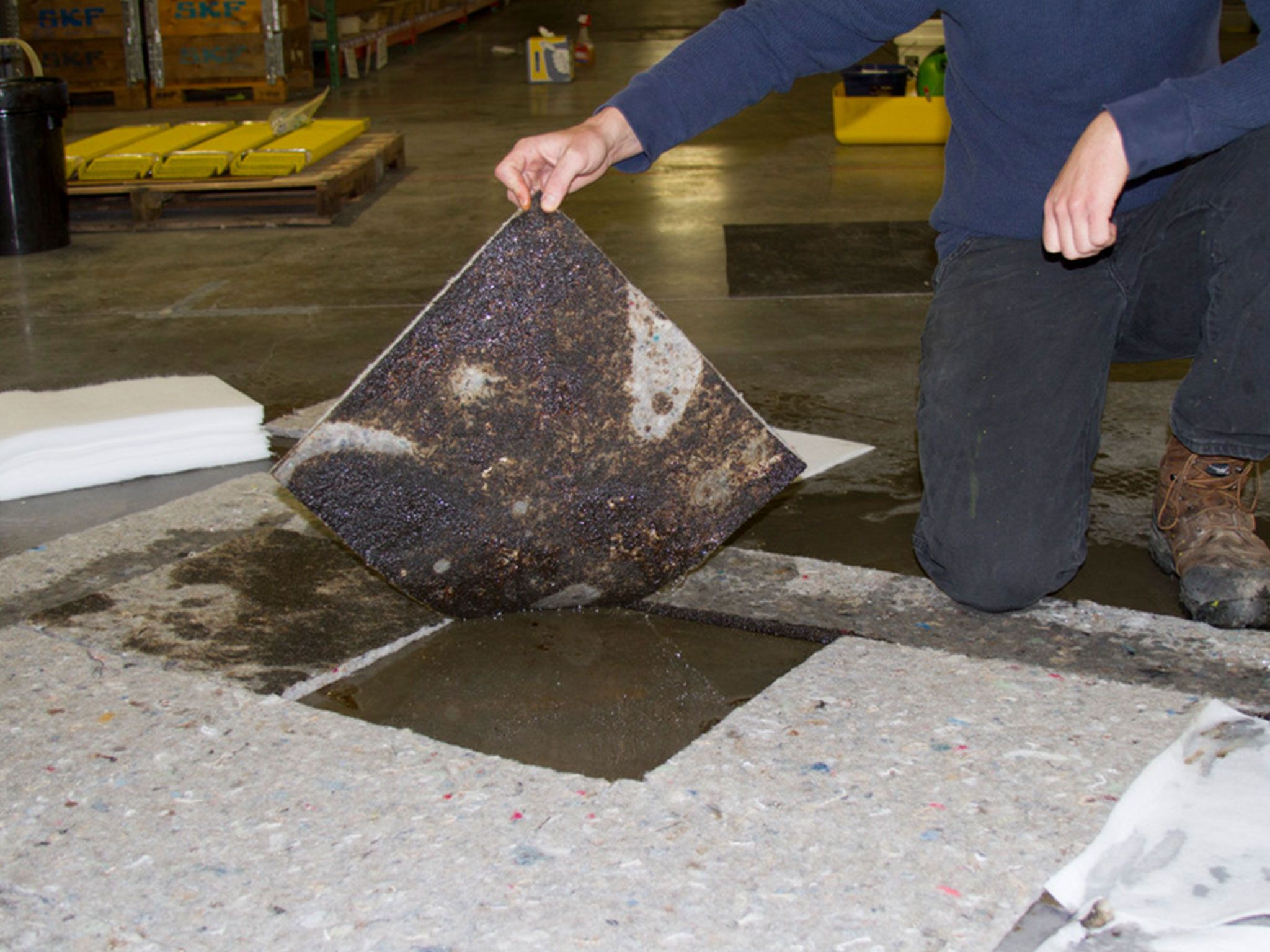
Spilltration® Husky Oil Filter Pads
Available in pro pack cases, smooshed pack cases and polybacked.
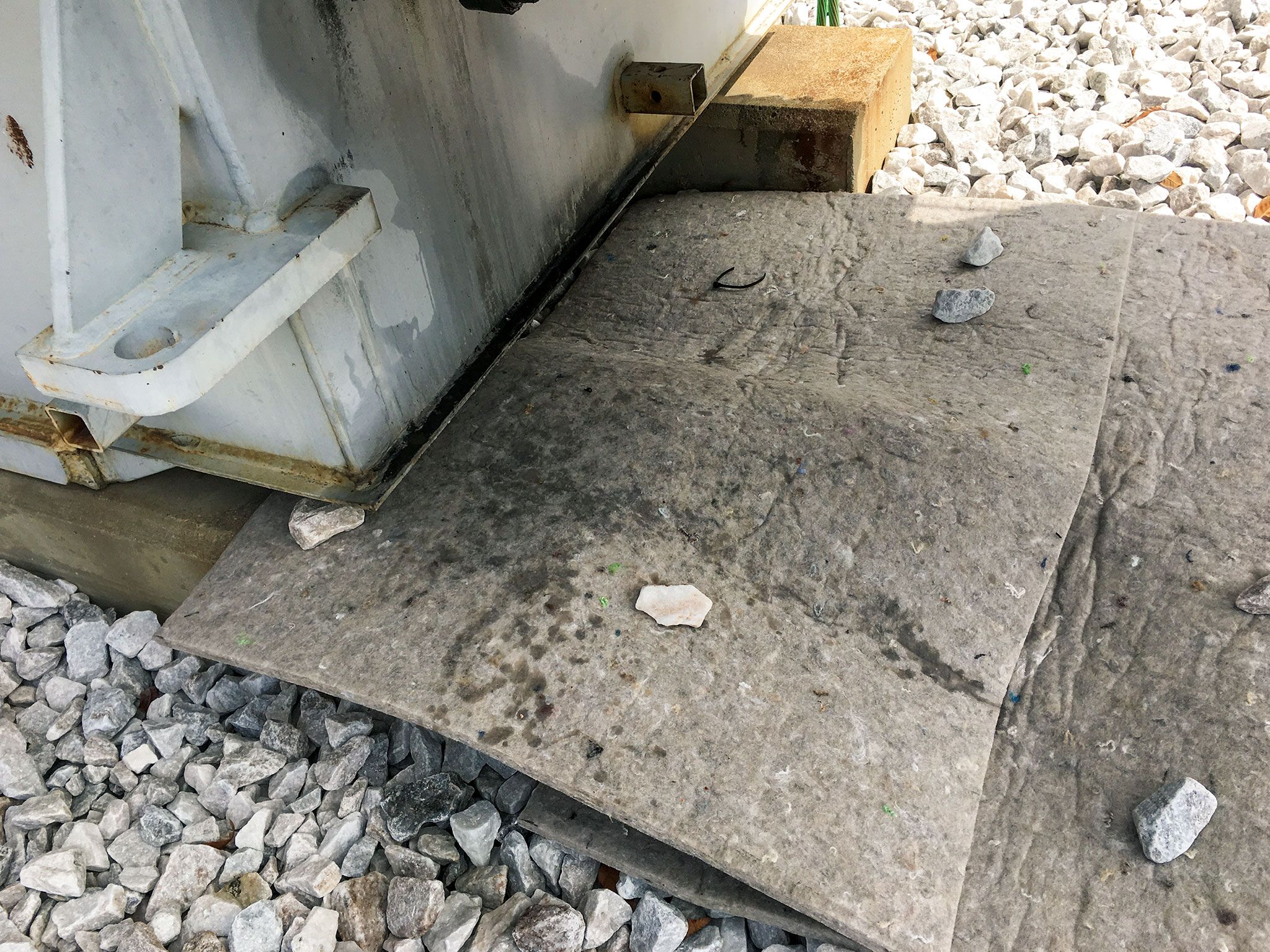
Choose spill control products that won’t degrade in the sun, wind, and rain.
Many of our customers work in mobile and remote locations and rely on spill pads to trap and contain oil until they can mobilize to the site to replace them. However, due to their chemical properties, polypropylene-based absorbents will break down under UV rays and are most likely not your best bet.
Are you frustrated with ineffective materials that don’t work? Then, it’s time to choose spill control solutions that stand up to the rigors of the great outdoors. And that means choosing materials that can take sun, wind, and rain abuse.
For years we have been frustrated with the ineffectiveness of white spill pads and socks for transformer oil leaks at our substations. They degrade to flakes in sunlight, blow all around the site and allow oil to wash out in rainy weather. White pads make our cleanup job harder, not easier. Thankfully, Spilltration Husky products don’t degrade in sunlight and last for months and months.
If you’re looking for long-term outdoor spill control solutions, look no further than Spilltration® Husky. Wouldn’t you say it’s time for an upgrade?
Need some help choosing the right spill control products?
Contact us if you have any questions or need help finding the right spill control products. Our Customer Success Team is available by chat or by phone at 814-822-2004.